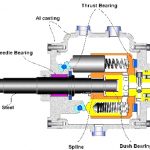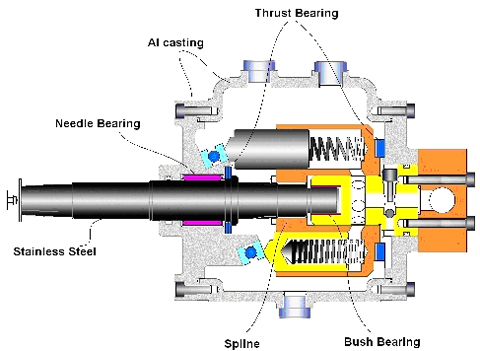Replacing the boat engine with a battery-powered hydraulic system
A hydraulic system is a type of motor that uses a fluid to transmit power from a motor to a load. It is used in industrial applications and in most watercraft. A hydraulic system can be powered by an engine, or by the energy stored in a battery or other device that converts chemical energy into electrical energy. An engine-powered hydraulic system is called an inboard engine.
The process of replacing the boat’s original engine with a battery-powered hydraulic system will require the installation of new components and modifications to existing ones. The installation process should be done by professionals with experience working on boats, as it will require removal of all existing components, installation and maintenance of new ones, and replacement of any damaged parts during the process.
Electric Boat – UK Lynch 13kW DC Motor – NOT your typical “marine transmission.”
Why Would You Want to Power Your Boat With a Battery?
Batteries are an affordable and readily available power source. They can be used as a substitute for gasoline, diesel, or other fuels. This is especially true when you consider the ever-increasing cost of fuel.
When you run out of power on your boat, it can be difficult to get it back up and running. But with a battery, you can easily power your boat without having to worry about the availability of fuel.
A battery provides an alternative way to power your boat in case there’s no fuel available or if the cost is too high for what you want to spend on fuel. Additionally, it’s environmentally friendly because it doesn’t release any harmful fumes into the air like gasoline does when it is burned in.
What are the Benefits of a Battery Powered Hydraulic System?
A battery powered hydraulic system is a type of hydraulic system that uses electricity to power the pumps and motors.
The benefits of a battery powered hydraulic system include:
- Can be used in areas where traditional systems cannot be used, such as in confined spaces.
- Battery powered systems are more cost effective than traditional systems.
- They can be used for smaller projects with less demand.
How Do You Add a Hydraulic System to Your Boat?
The most important thing to know about adding a hydraulic system to your boat is that it is a complex process. It requires the installation of pumps and hoses, valves, and fittings.
However, if you have the proper equipment and knowledge, adding a hydraulic system to your boat can be a fairly easy process.
The first step in the process is to determine what kind of pump you are going to use. The two main types of pumps are centrifugal pumps and positive displacement pumps.
Centrifugal Pumps: Centrifugal Pumps are used when you need high-pressure flow rates at low rpm (rotations per minute). They work by rotating an impeller inside of a chamber with water or other liquid inside it while it spins at high speeds.
How to Connect the Engine To the Hydraulic System
Hydraulic systems are used in many different industries. They use the hydraulic system to provide power, control, and motion.
The three main components of a hydraulic system are the pump, the fluid reservoir, and the actuator. The pump is what pressurizes the fluid in the reservoir to create pressure for movement or power. The actuator is what controls the flow of fluid in a given direction by moving a piston or rotating an armature. Finally, there is the reservoir which contains a supply of fluid that can be pressurized and released at any given time.
A hydraulic system can be connected to an engine through a series of pipes and hoses that transfer fluids from one side to another. In order to connect an engine with a hydraulic system, you will need some basic tools.
Conclusion: Start Using a Battery Powered Hydraulic System Today and Get Every Advantage of It
In conclusion, the benefits of a hydraulic system are many and varied. From increased production to reduced energy consumption, hydraulic systems can increase your bottom line.
A hydraulically powered system will reduce downtime and help you stay on top of your production schedule. It also helps to reduce the amount of time it takes to set up and tear down equipment, which is an added benefit to any company that has a high volume of equipment in use.
You may also like:




